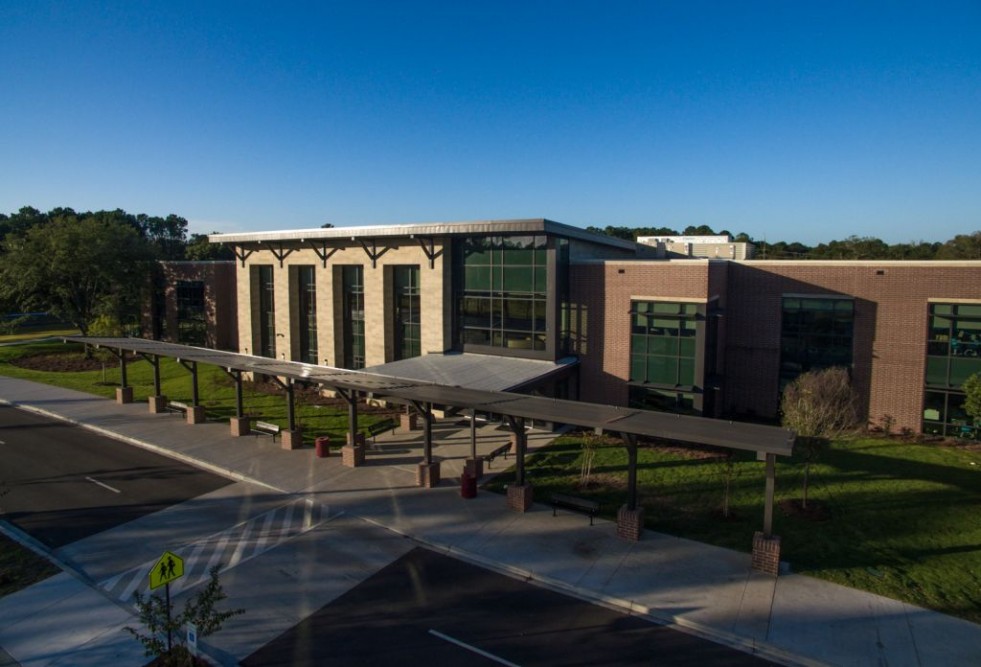 Working with 3D printers and digital cutters in a fabrication lab might sound a little intimidating, but, for the students at Laing Middle School, it’s a part of their day-to-day curriculum. Laing recently was ranked among the top 10 STEM Education schools in America – and the top three STEM Education middle schools in the country as well.
Working with 3D printers and digital cutters in a fabrication lab might sound a little intimidating, but, for the students at Laing Middle School, it’s a part of their day-to-day curriculum. Laing recently was ranked among the top 10 STEM Education schools in America – and the top three STEM Education middle schools in the country as well.
So what does STEM mean? It stands for science, technology, engineering and mathematics, and it’s taken on a life of its own at Laing Middle School. After six months of brainstorming, Laing’s faculty reinvented the program and introduced a “whole school” approach.
“How we have it framed is that it is embedded in everything we do and is not something separate,” said Principal Jay Whitehair.
Three main pillars form the foundation of STEM Education at Laing. Engineering is used to teach the students the process of problem solving. It helps middle schoolers think through issues and come up with the most logical and efficient way to resolve them. Technology, meanwhile, is more than just iPads and smartboards. It’s all about the nuts and bolts and innovative procedures that keep the wheels turning in the business world. The final pillar is technological literacy. This means that students are expected to do more then just read, write and speak. They need to be able to comprehend the world around them, and they need to know how products are made and how businesses are run. In short, they need to know how things get done.
These three pillars are the foundation of a fully immersed curriculum. The STEM Education principles even are evident in classes such as Language Arts, where the students incorporate the information they accumulate through STEM into the framework of their studies.
Over the course of this school year, for example, students were instructed to research the most viable form of renewable energy for the future and to write an argumentative essay about it.
“The idea of providing hands-on opportunities mean that they will be more invested and more likely to understand the concepts that they learn, which is going to impact them on their daily lives. So I think that’s essential and it brings engagement,” Whitehair commented.
STEM Education is not just useful for teaching information but also to impart important lessons to students about communication, teamwork and other “soft skills.” These are inherently taught through the hands-on activities that the students participate in. Another way Laing is different is that students don’t have individual desks. Instead, they work at community tables where they are expected to collaborate and learn as a community, rather than in isolation. This method of learning mirrors the real world and demonstrates the necessity for a basic understanding of interpersonal skills.
STEM Education not only helps prepare students for the outside world but also exposes them to a myriad of careers and possible opportunities they otherwise would not be exposed to. STEM Education is not targeted to a specific group of people, but, as of right now, fields that professional fields that depend on science, technology, engineering and mathematics are severely lacking in minorities and women. Whitehair said Laing acknowledges the problem and is working hard to ensure that the school helps to create a new generation of STEM learners that includes and welcomes women and minorities.
“There are some stereotypes about the STEM field that we are really looking to break down,” Whitehair said.
Laing is participating in a Charleston Metro Chamber of Commerce pilot program that is introducing career academies in middle schools to catch kids early and help them discover their passions and interests. Innovations like these are signs that the program is constantly evolving and changing.
The skills that the students learn translate to success at the middle school level and beyond.
“My hope is that it allows them to be engaged in the learning process and prepares them for high school and beyond and makes them college and career ready. I just want to provide that foundation,” Whitehair said.
By: Samantha Sullivan

Leave a Reply